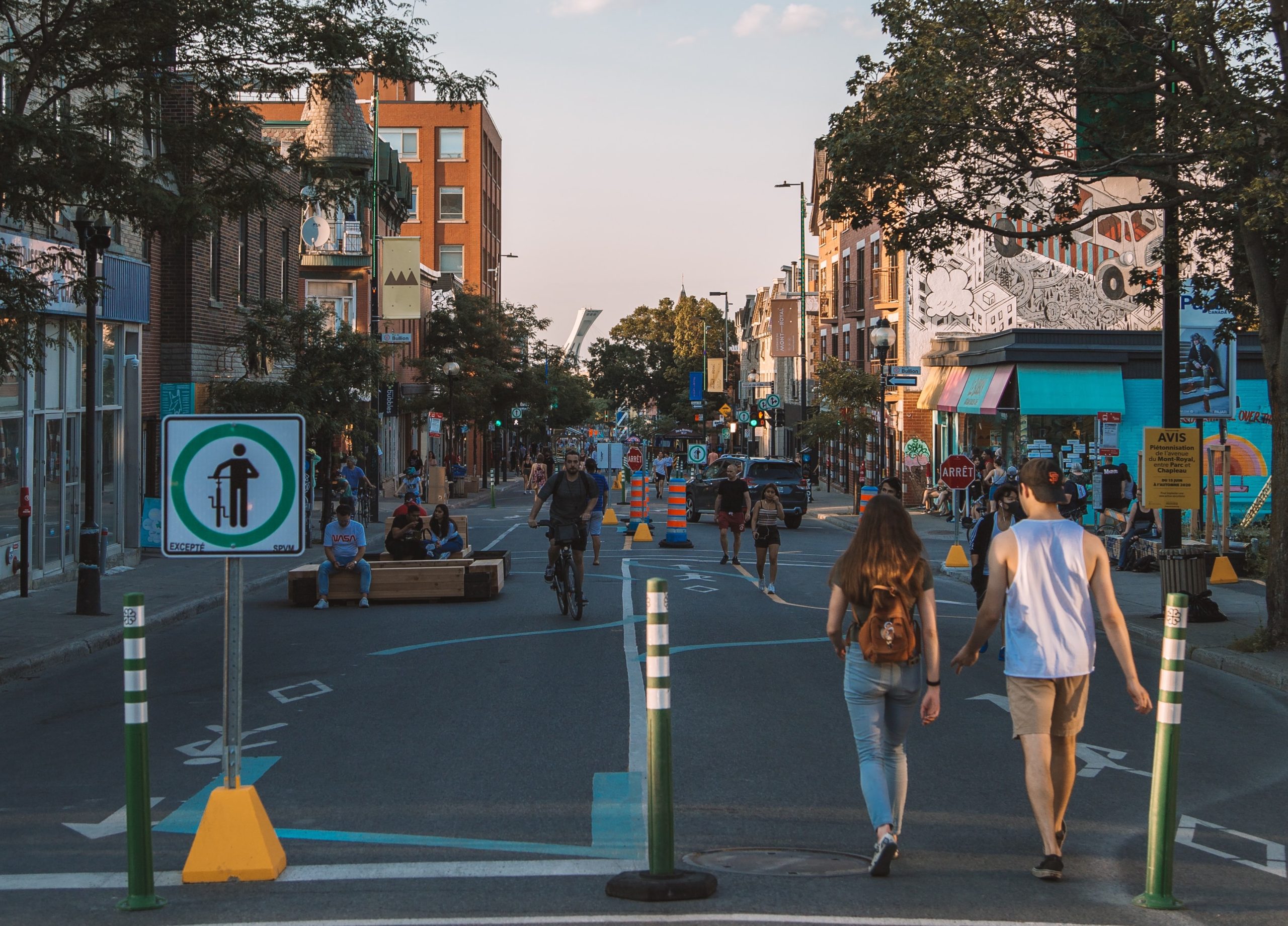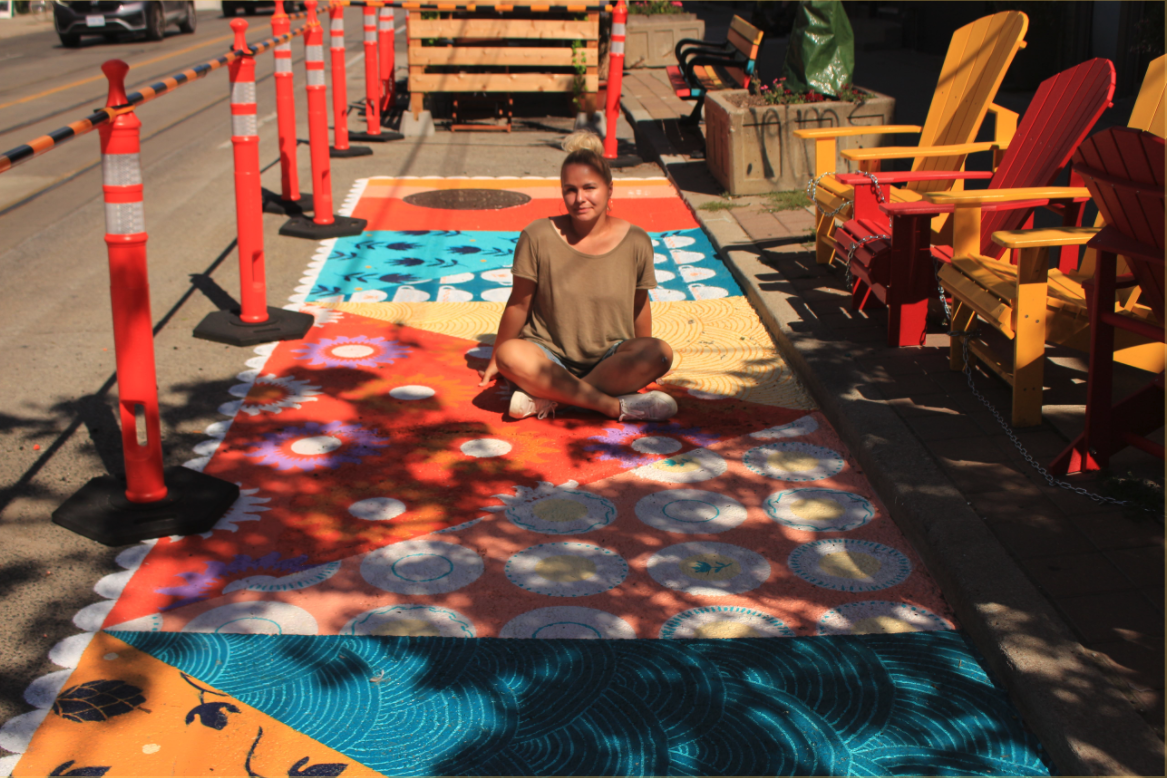What can we learn from one of the most creative cities in North America
Montreal has a reputation as one of Canada’s more ‘artsy’ cities, and it’s true that it seems like the island is overflowing with public art. It’s not just the volume of art projects that sets Montreal apart; the culture and community engagement in Montreal around public art is what makes it so integral to the fabric of the city. The commissioning, development, and engagement with public art projects in Montreal reflect the city’s sense of community-mindedness.
The city of Montreal continually prioritizes arts and culture; a strong annual budget, collaboration with diverse stakeholders, funding for institutions to extend the museum space into the outdoor public realm, and ‘pop-up’ art zones contribute to a public art scene that builds on the city’s identity as a cultural hub.
In 2017, researchers from OCAD University and the University of Toronto joined together to produce the report “Redefining Public Art in Toronto”, which used Montreal as an example of a city that views public art as a main municipal and provincial service. The authors advocated for Toronto to develop a public art plan with key lessons from Montreal.
The report identified elements that contribute to the strong public art culture in Montreal, such as seasonal and reoccurring programming, explorations in temporary and ephemeral public artworks, support for artists during their process, communication between citizens and the Bureau d’Art Public, and selection juries with diverse members. Overall, these factors contribute to a “collaborative model” of art-making that is particular to the city.

Pedestrians stroll down Mont-Royal Avenue, one of Montreal’s main streets, which is closed to vehicles and animated by public art activations every summer
Public art high and low: Montreal’s collaborative model
In recent years, even as Montreal faced the COVID-19 health crisis, public art projects emerged that demonstrated the strength of community-oriented cultural planning. These initiatives approached public participation in different ways: by uplifting community members, consulting local residents in the selection and design process, moving contemporary art from traditional gallery spaces into the public realm, and spotlighting community businesses and makers. The collaborative model behind creative placemaking and public art activations in Montreal contributes to the city’s famously thriving arts scene.
Uplifting local businesses: Garden of Hope in the dead of winter
The “Jardin Des Espoirs” winter station aimed to brighten the Rivière-des-Prairies-Pointe-aux-Trembles community, with poetic statues resembling human faces looking at and through each other. Called the “Garden of Hope”, the installation took inspiration from the cargo ships on the Saint Lawrence River and the swallows that are distinctive in the area to revitalize the vacant lot.
The project employed local apprentice cabinet makers to construct the works as part of their training, using eco-friendly materials and recycled ash wood. The initiative also encouraged public participation with a playful initiative to collect ribbons from local businesses and attach them to the structures.
MASSIVart, who collaborated with Aedifica, Körnelius and the Groupe Information Travail’s woodworking workshop for the winter stations, states that their objectives for the project were to “bring joy back to people and encourage the local economy” during the pandemic.
Community engagement: Creating art for common spaces
For the mural on the side of the 6600 Saint Urbain Street building, one of the Mile End neighbourhood’s historic textile factories that has now become a loft-office space, the local community was invited to vote on the top three proposal ideas. This democratic community engagement helped residents choose a mural that sparked pride in the area. The winning idea, by artist Izabelle Duguay, explores the intersection of the urban and natural worlds, as the Mile End moves from its post-industrial roots towards a sustainable future.
Another Montreal mural initiative, ArtduCommun, prioritizes collaboration and consultation with the community that will enjoy their mural projects. ArtDuCommun recently created a mural for the Oasis residency for people living with mental health challenges. The mural integrated ideas that the residents came up with during an art therapy session, visualizing a sense of peace or haven, as well as elements of the neighbourhood.
Building bridges: Bringing contemporary art into the public realm
Art Souterrain, an established non-profit organization in Montreal, puts on a yearly festival and accompanying programming to promote accessibility, transparency, and understanding in the relationship between contemporary art and its audience. For this past year’s “Créer des Ponts”, or “Building Bridges” project, Art Souterrain partnered with the city of Montreal and the real estate sector to facilitate artist residencies for 60 emerging artists in vacant storefronts downtown. In 30 exhibition spaces, the public was able to get a glimpse of the production of public art, and artists were able to work out of a studio space.
This collaborative programming between public art and fine art galleries and museums bridges the divide between contemporary art and the public realm by making fine art more accessible to citizens and transforming the Montreal cityscape into an open-air art gallery.
Redefining Canadian public art: Creativity and community everywhere
In Montreal, public art is viewed as a core municipal service, an element that is central to the city’s identity and structure. By prioritizing engagement with community members and a sense of involvement in artistic programming, public art increases the city’s livability on the day-to-day. Strengthening the position of public art at the core of the city–as part of both the Montreal ‘experience’ and infrastructure– acts as a catalyst to attract tourism and promote global recognition of the region.
As the Redefining Public Art in Toronto research report asserted in 2017, other Canadian cities can take inspiration from Montreal’s model of innovative art in the public realm. In 2020, the City of Toronto announced its Ten-year Public Art Strategy Plan to strengthen the municipality’s commitment to public art and commit to engaging communities across the city in the decision-making process and implementation of public art projects. The plan identified key pillars similar to the framework in Montreal: “Creativity and Community–Everywhere”.

The I HeART Main Street program works with Business Improvement Areas to create public art activations on street level in Toronto, like this ground mural by artist Gosia Komorski
A new year of public art in Toronto
Toronto’s commitment to public art funding has helped realize several community-engaged initiatives that expand on the definition of public art in the city. As part of ArtworxTO: Toronto’s Year of Public Art 2021-2022, the City of Toronto supported artist capacity building programs like the 2021 Createspace artist residencies, allowing for more ephemeral interpretations of art in the public sphere. The city has also promoted a range of temporary or seasonal public artworks, with a commitment to Public Art Through Construction Hoarding (PATCH) exhibits, and main street activations in partnership with ShowLoveTO.
More traditional public art practices like mural works have embraced public participation with projects that prioritize community input and collaboration, like the recent Leslie Nymark public art project that brought residents into the concept and design process, or the Together We Grow mural by artist Gosia Komorski that engaged over 200 community members in its production.
Montreal’s multifaceted public art scene demonstrates how building relationships, engaging the community, and prioritizing collaboration between sectors can build public art into the core of a city’s identity. Taking inspiration from the neighbouring province, a new emphasis on more creative mediums, methods, and perspectives in Toronto’s public art scene can broaden the framework of what public art can be, and what it can do for the city.
About the Writer
This article was written by Eva Morrison (she/her), a writer, curator, and painter based in Montreal. Her work has recently been published by Culture Days, Winnipeg Arts, and FARR Montreal. She received a BFA from Concordia University in 2019, specializing in Art History and Studio Arts.


